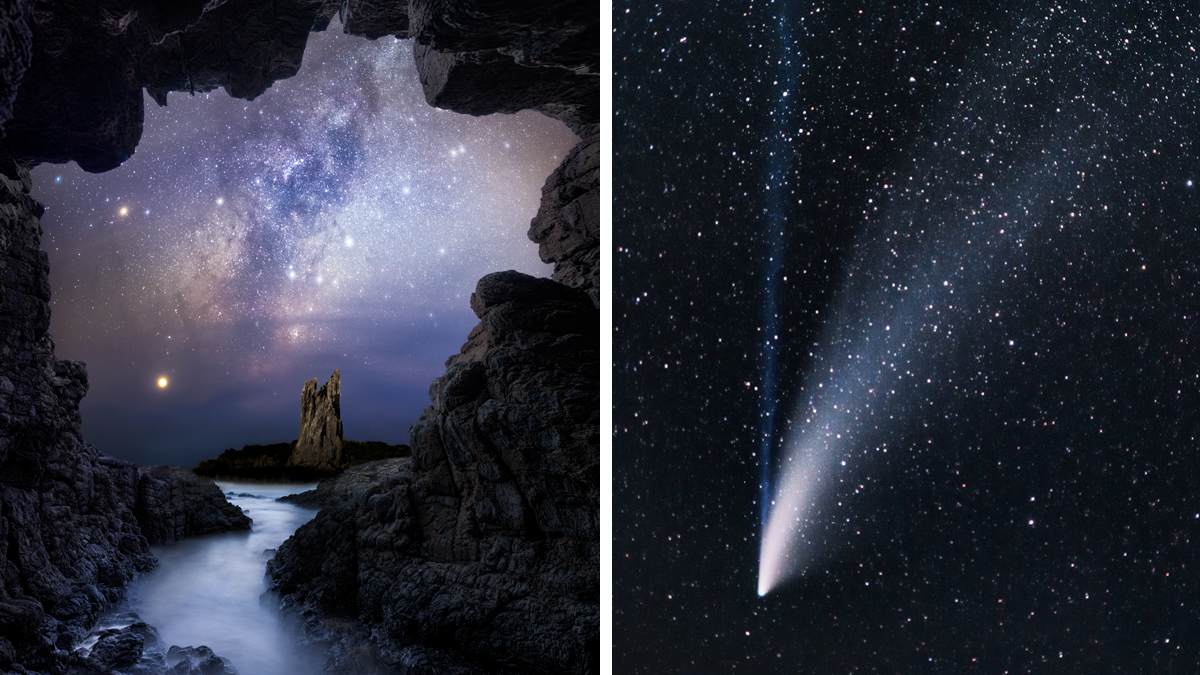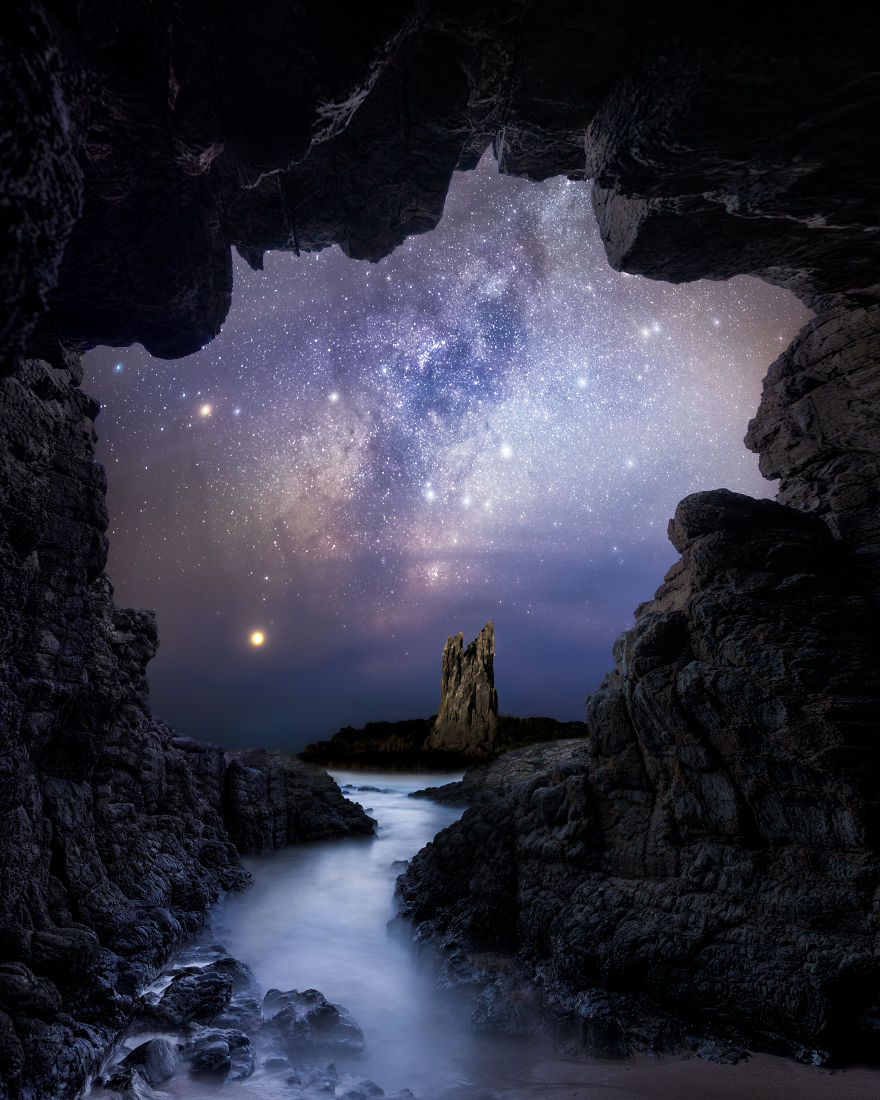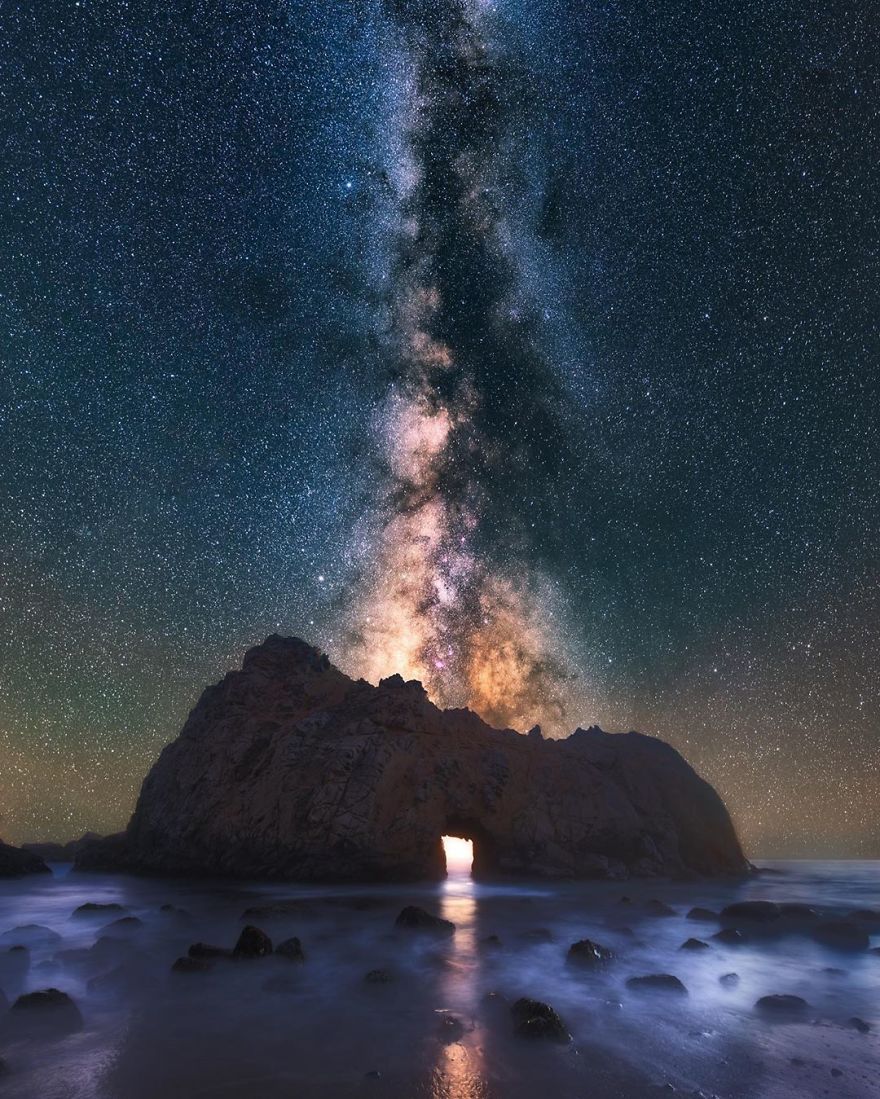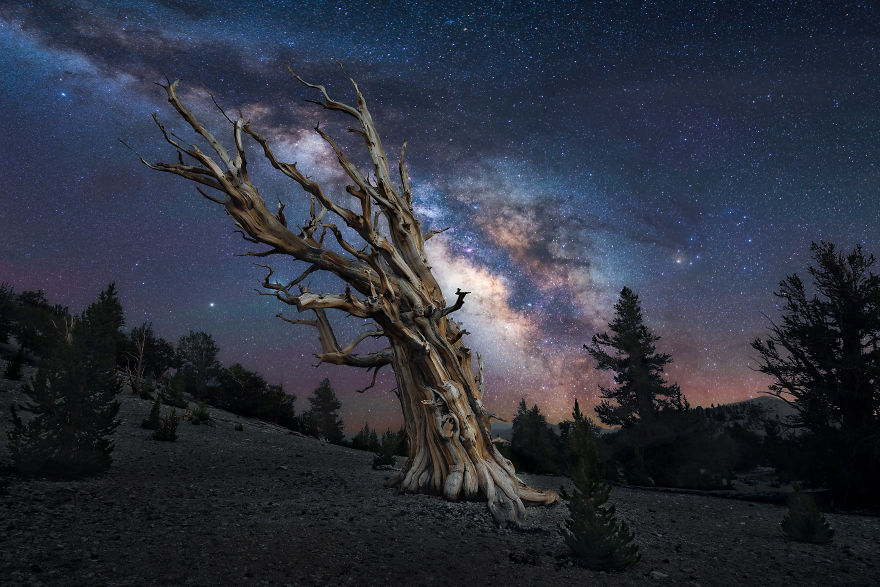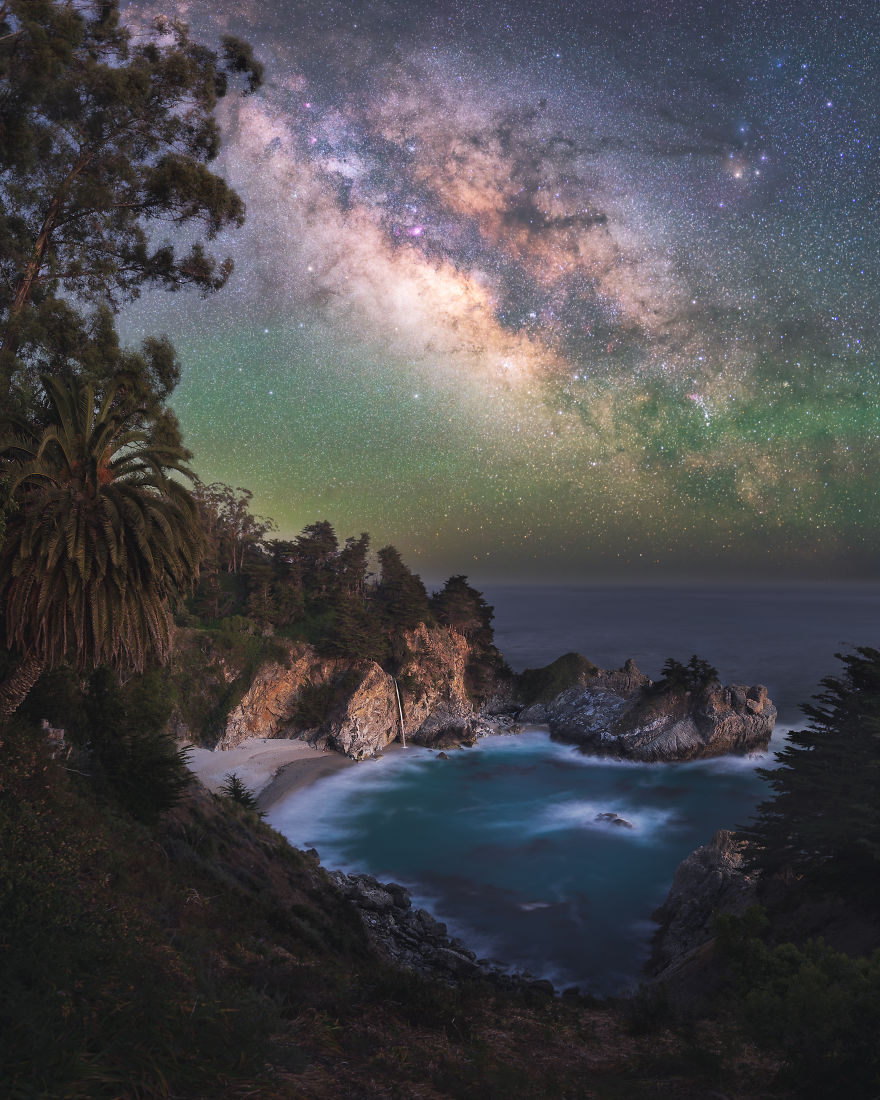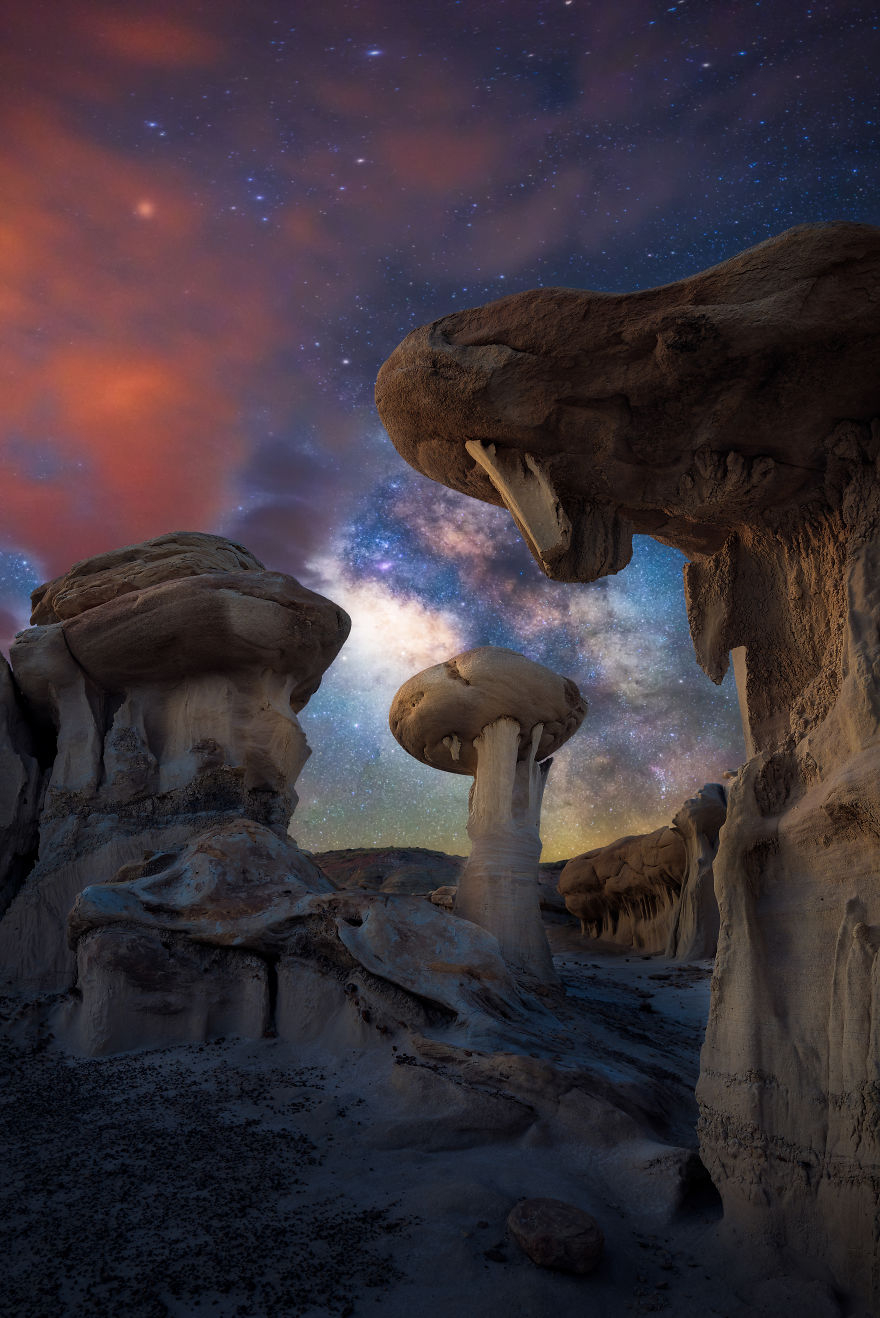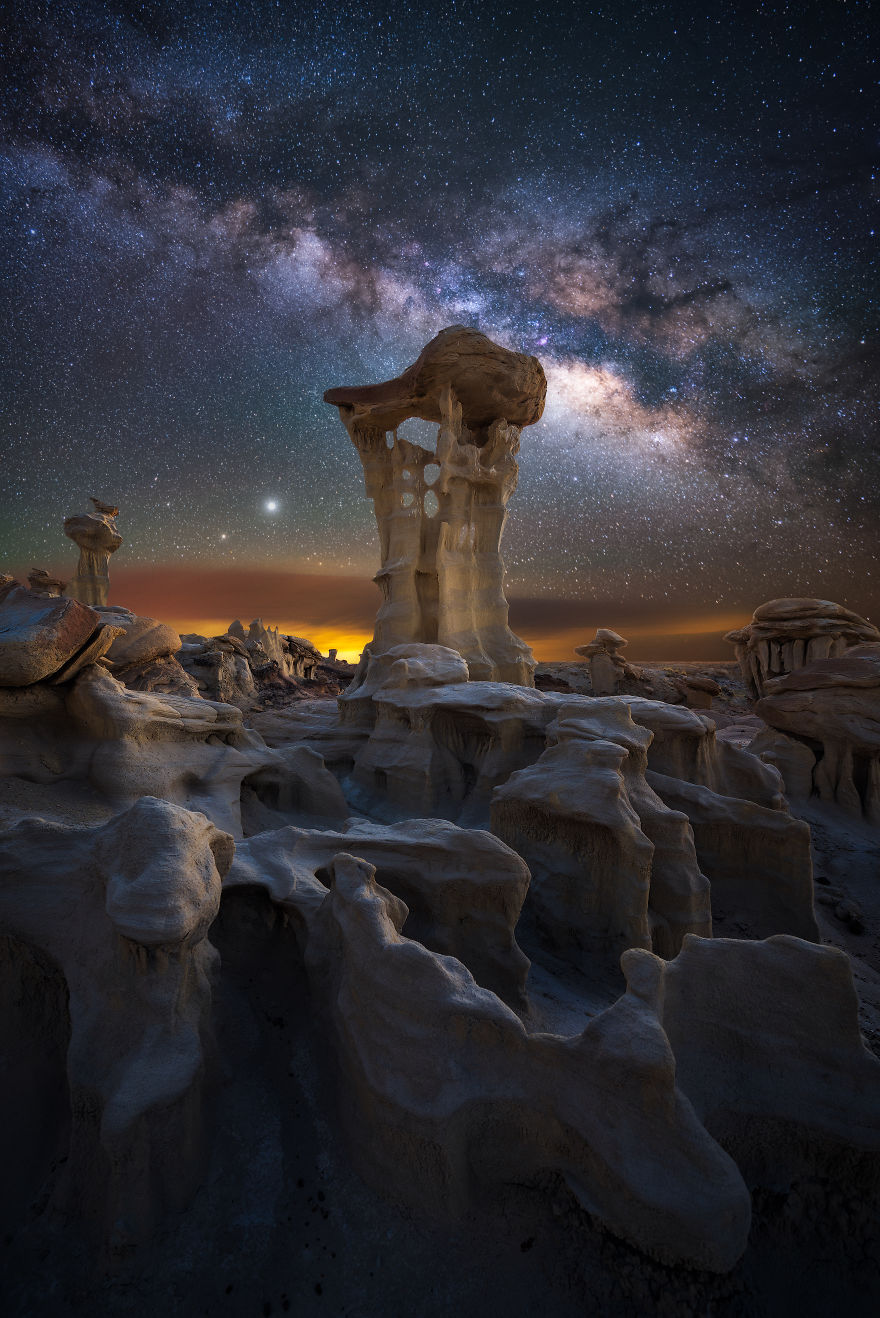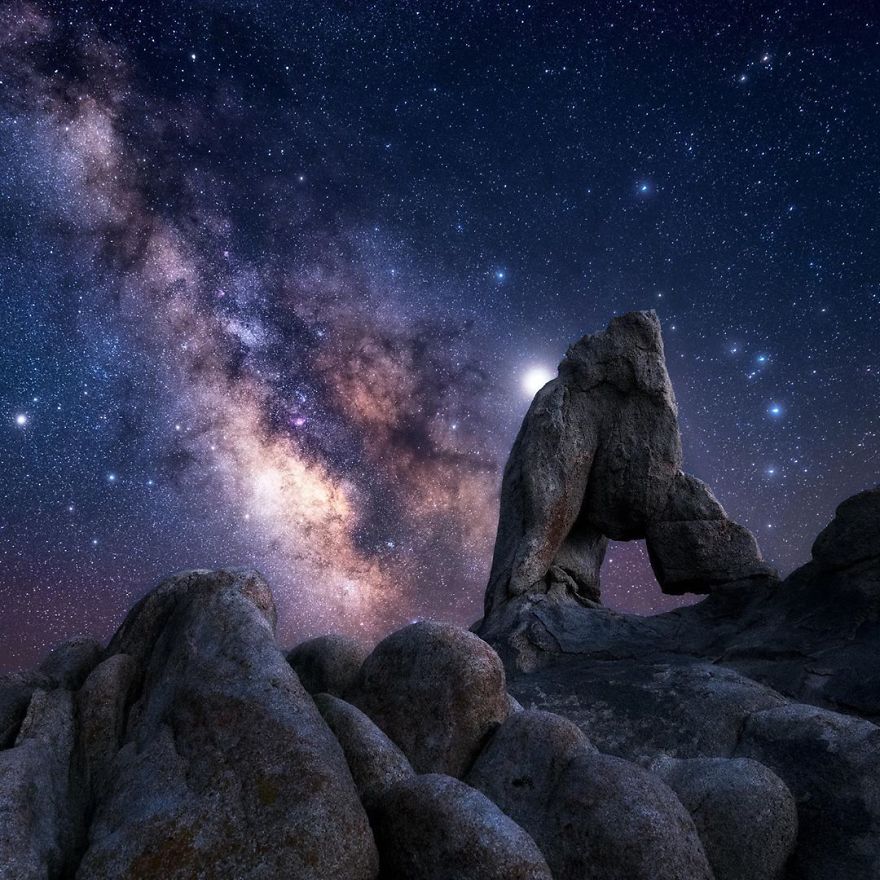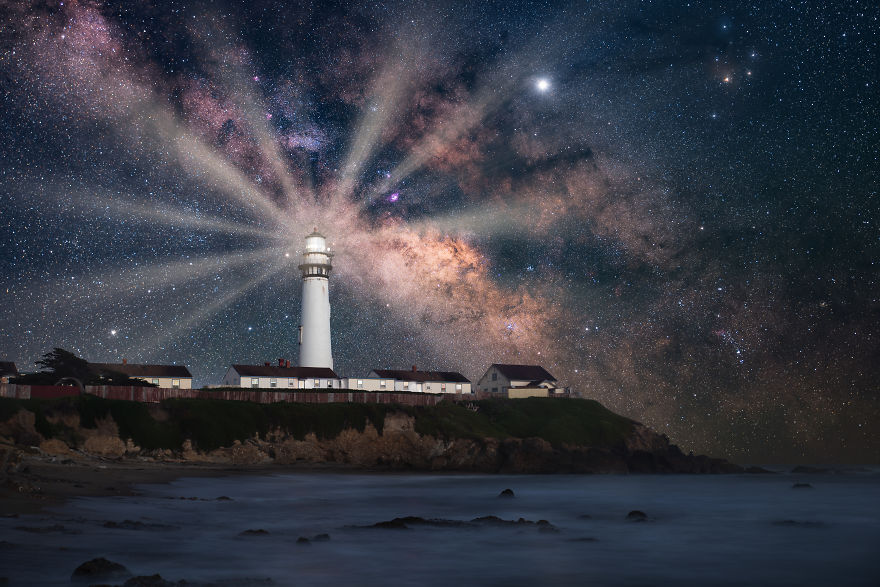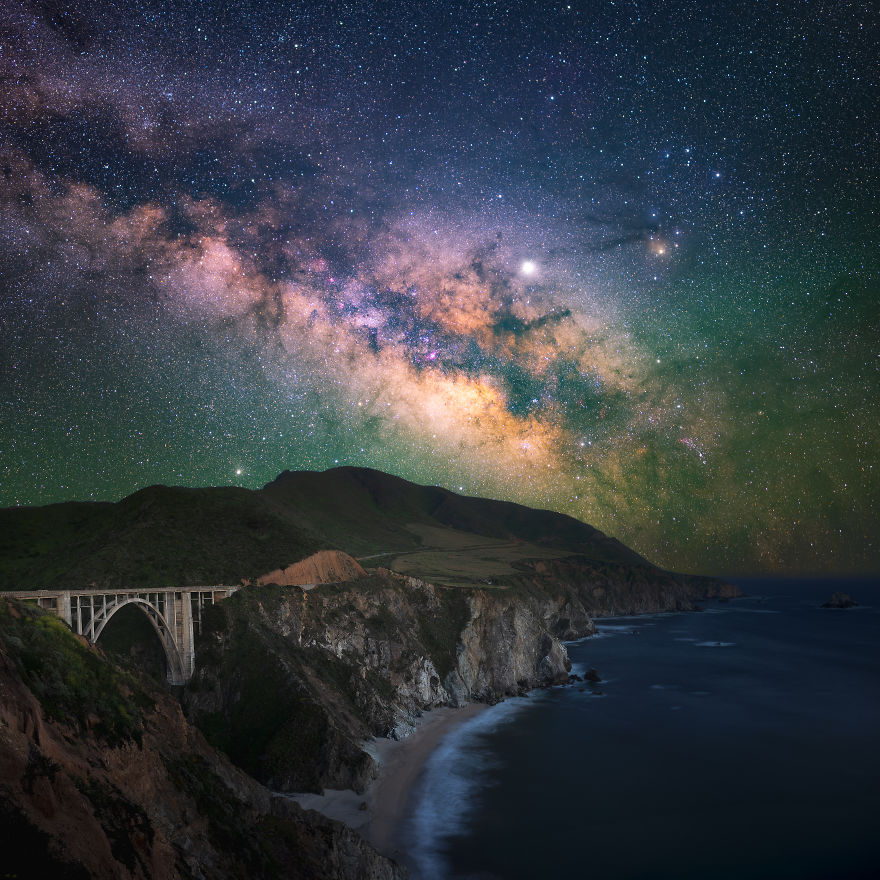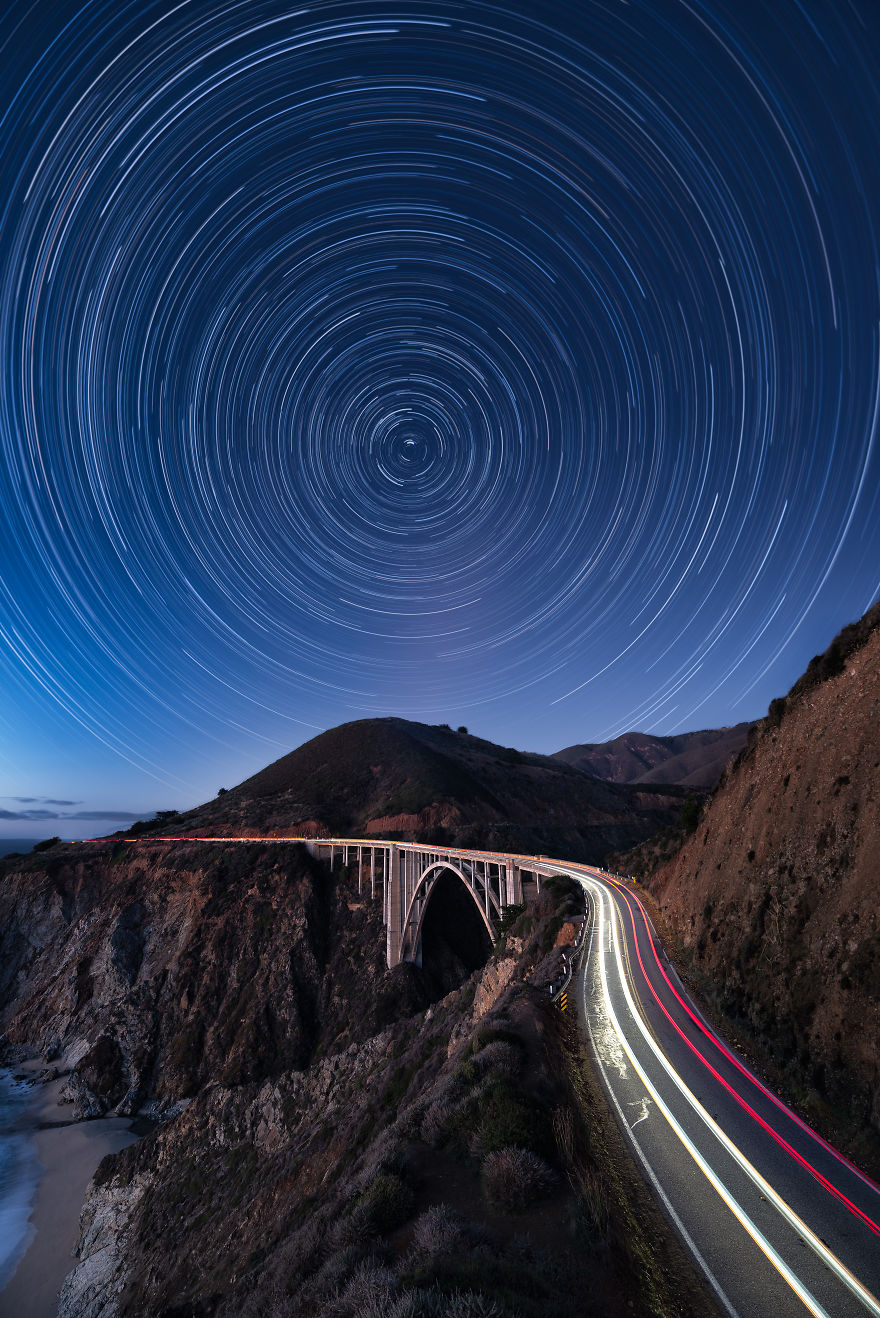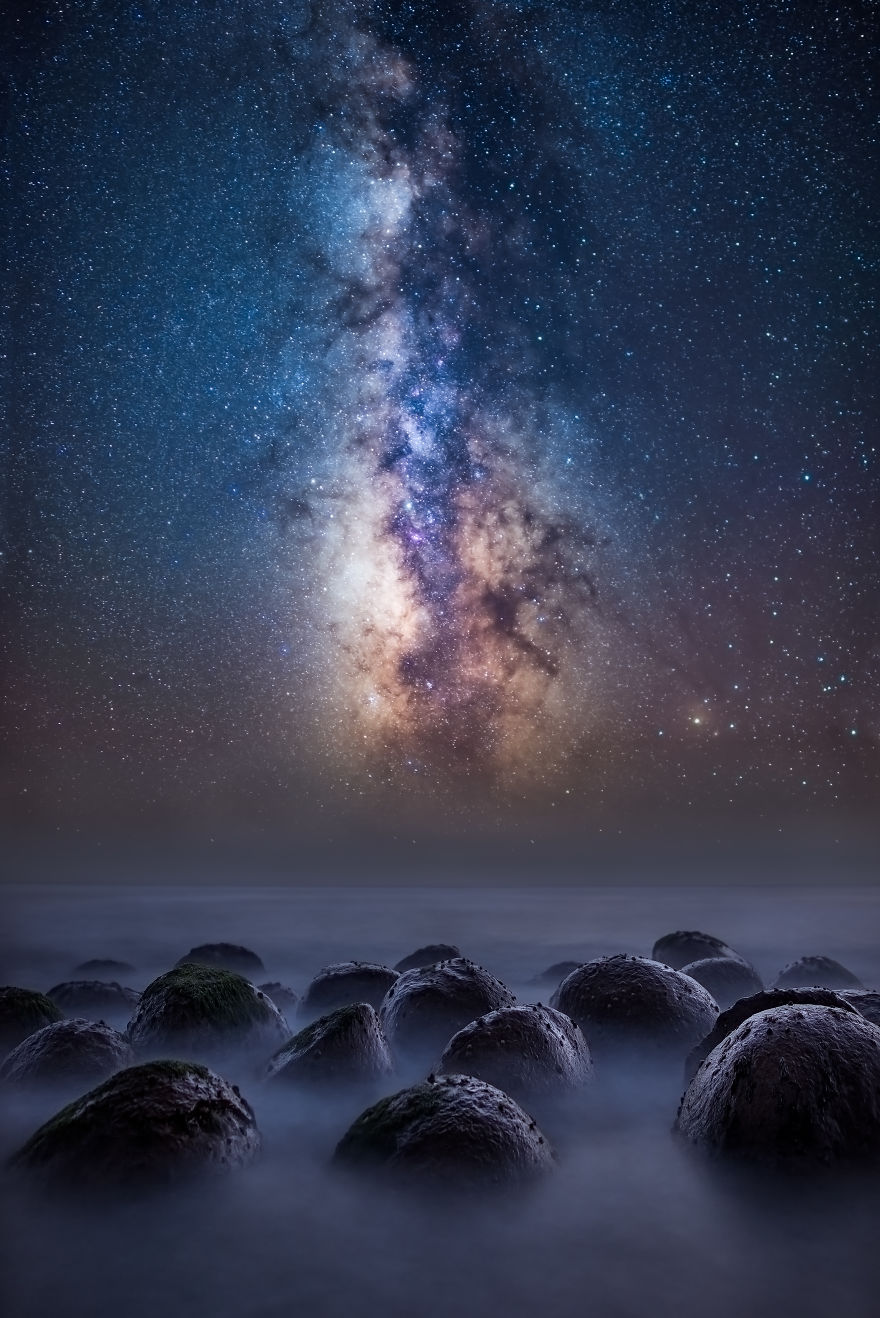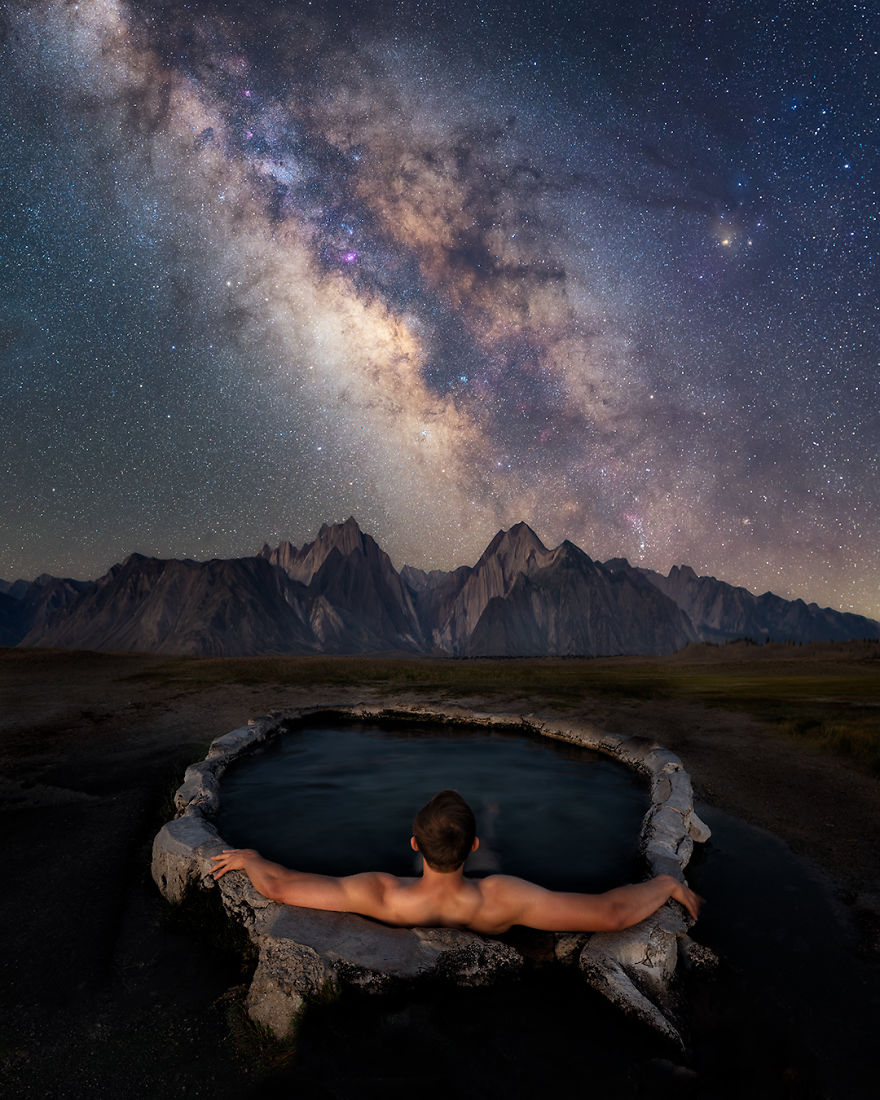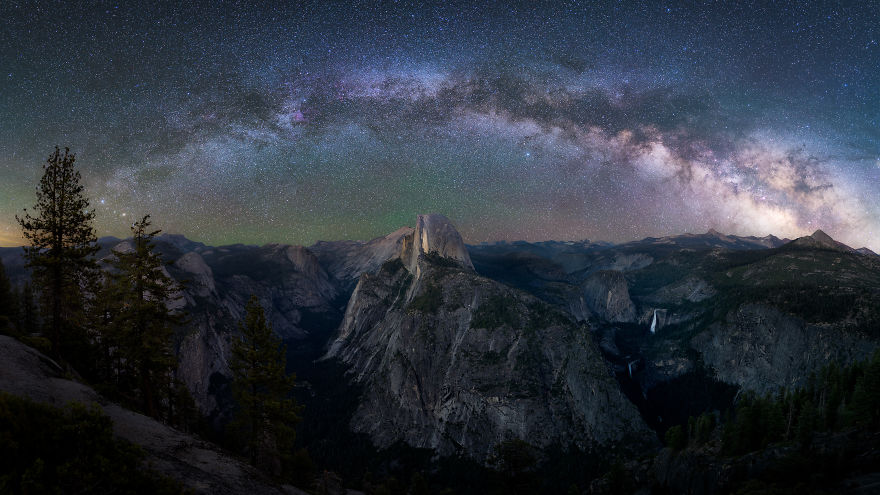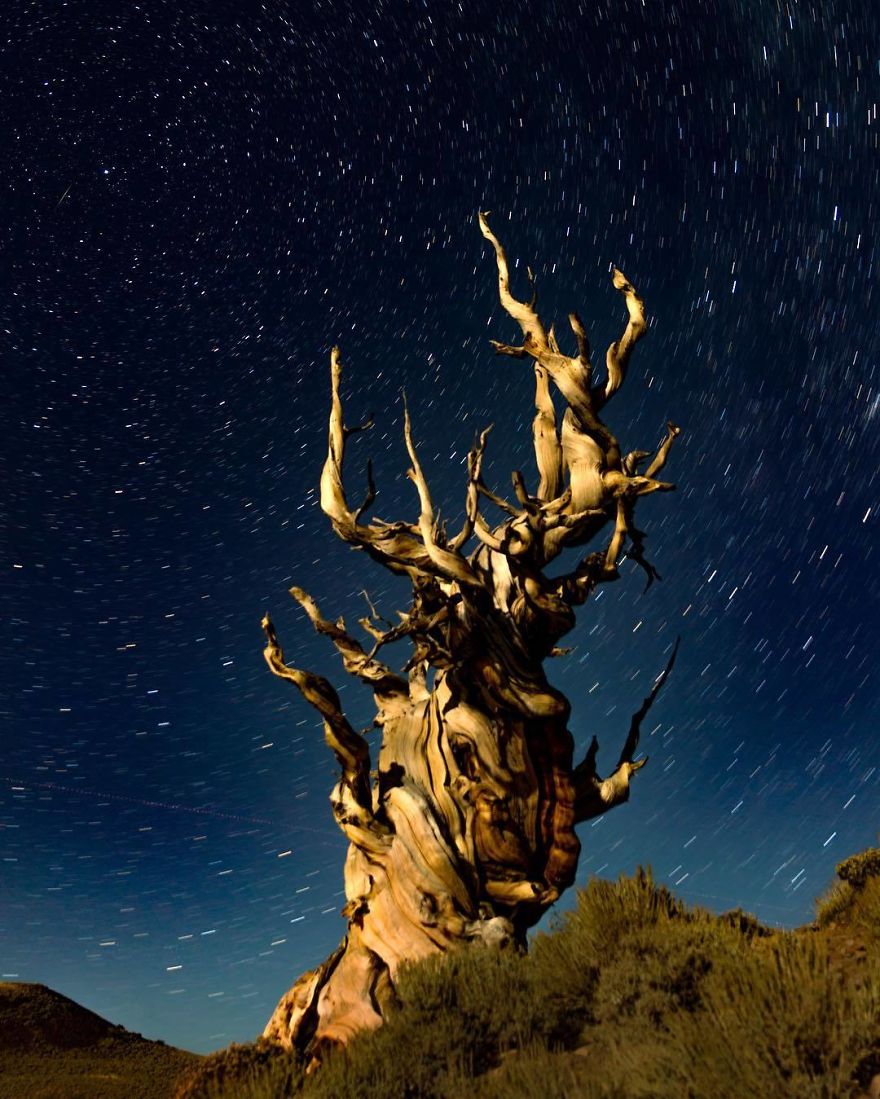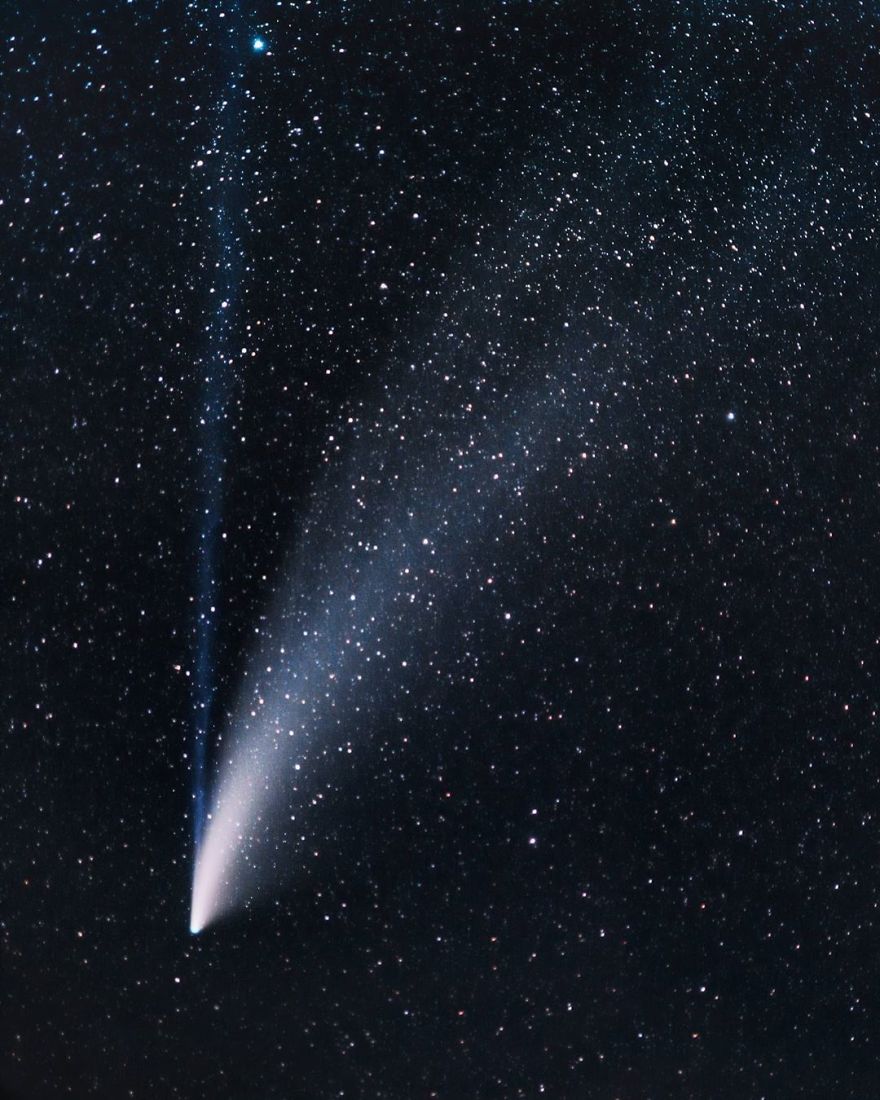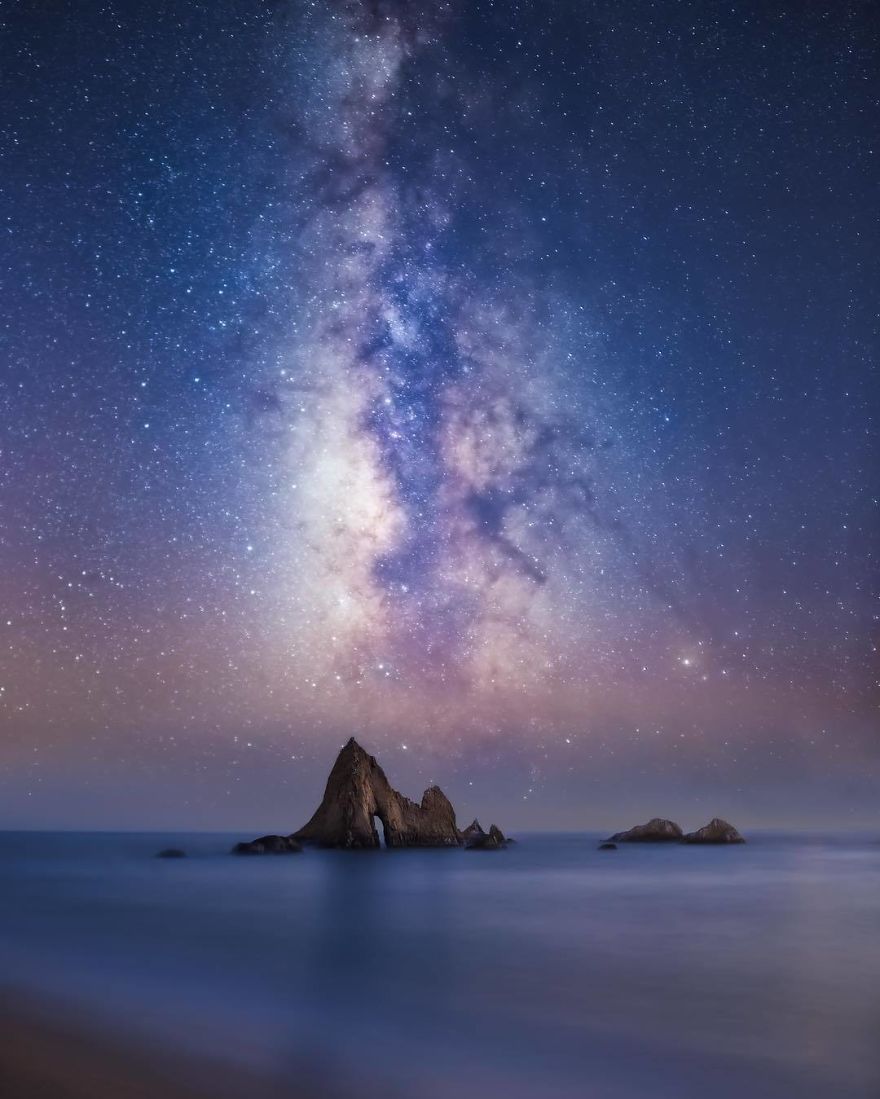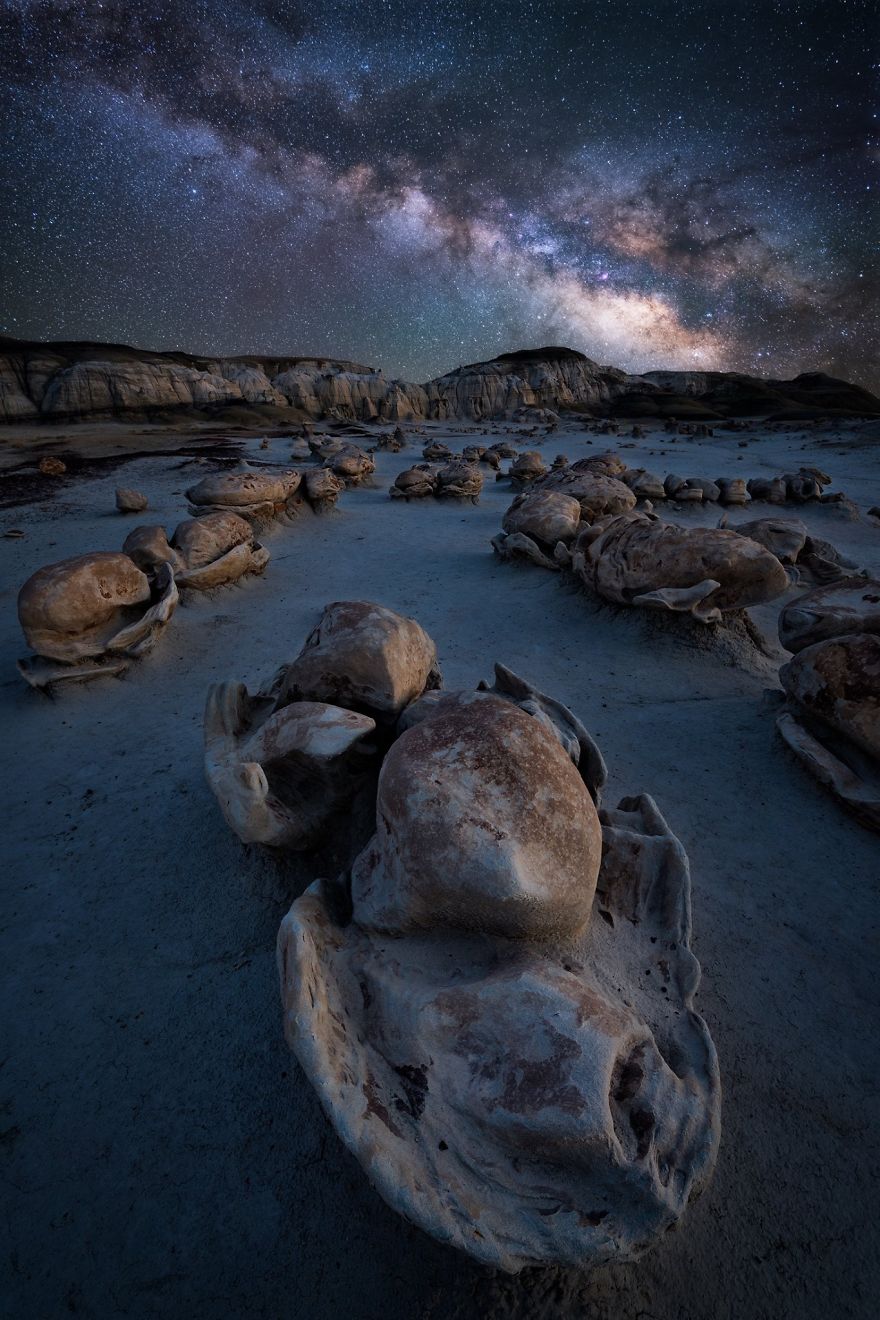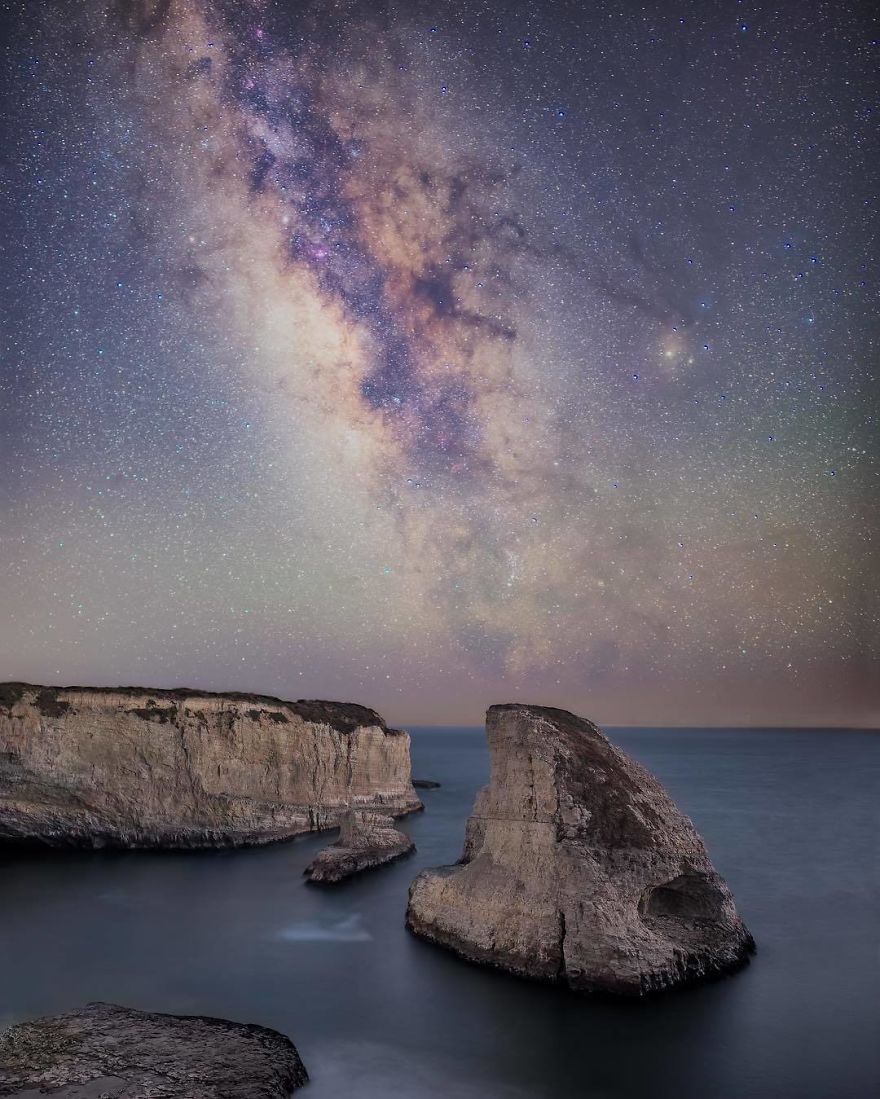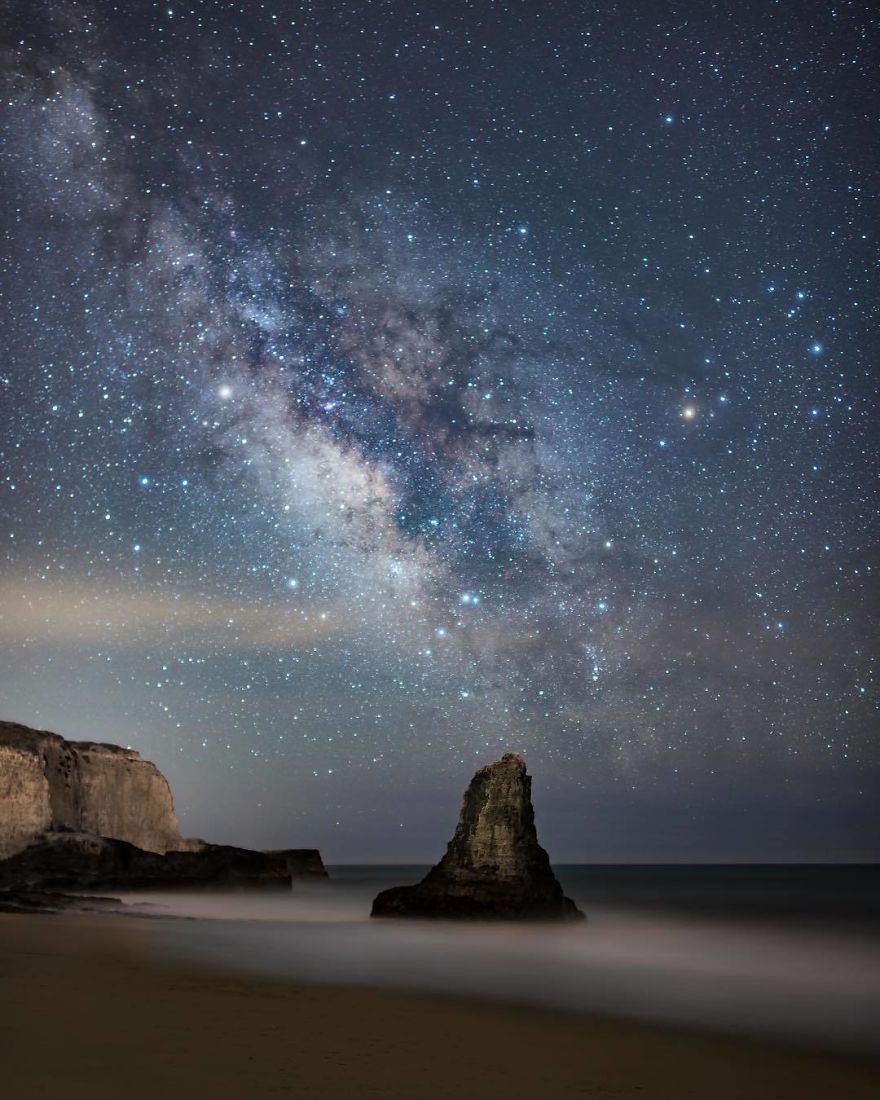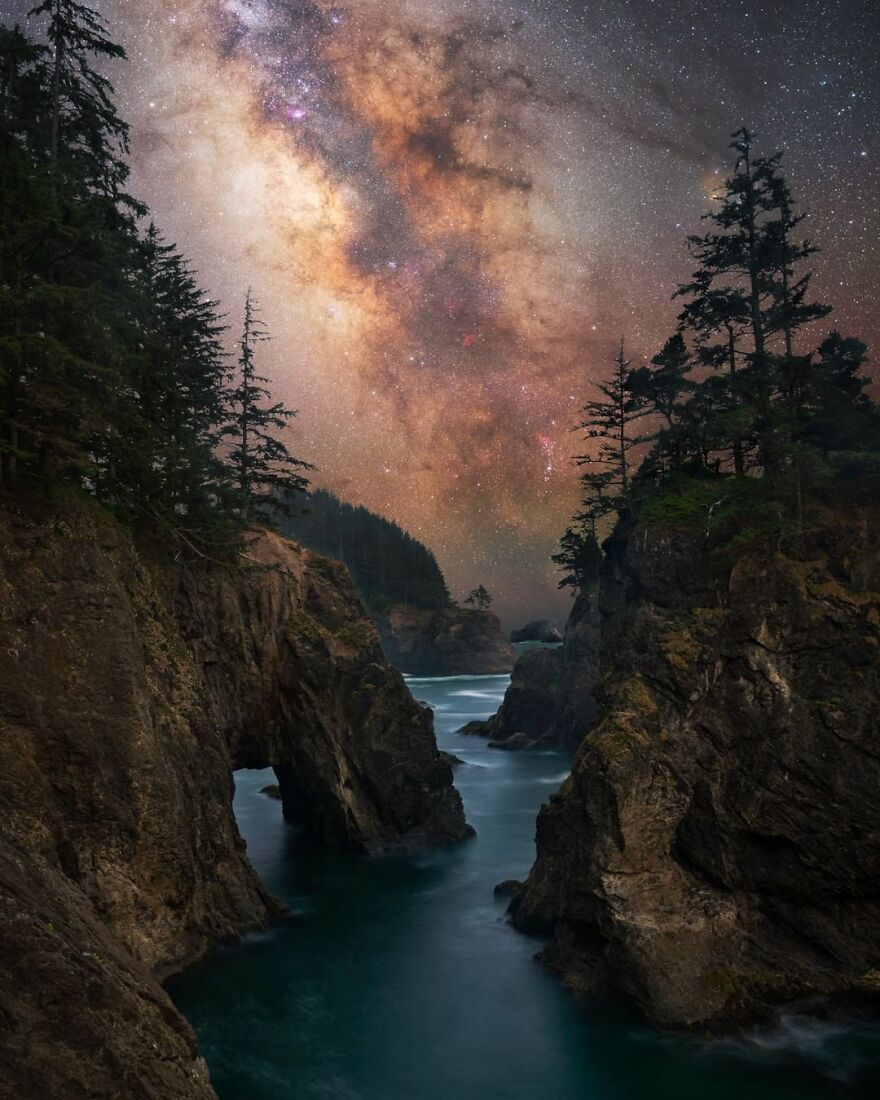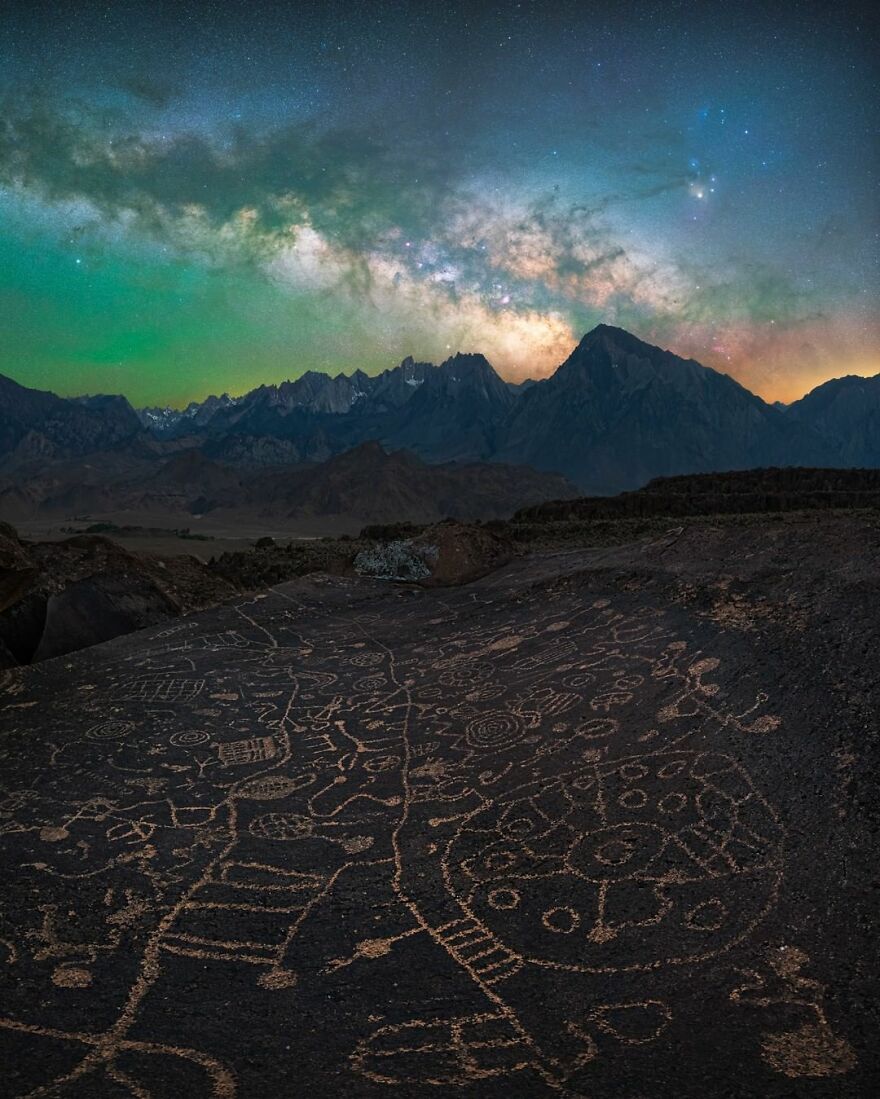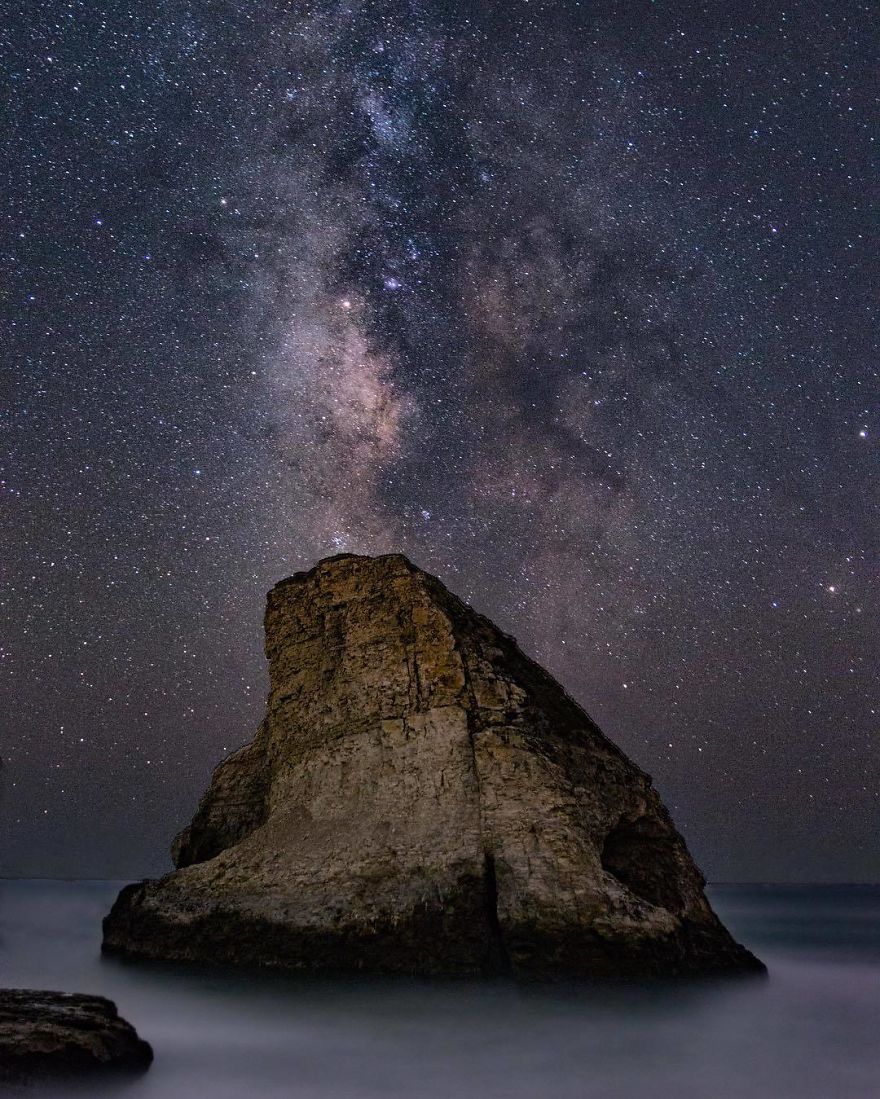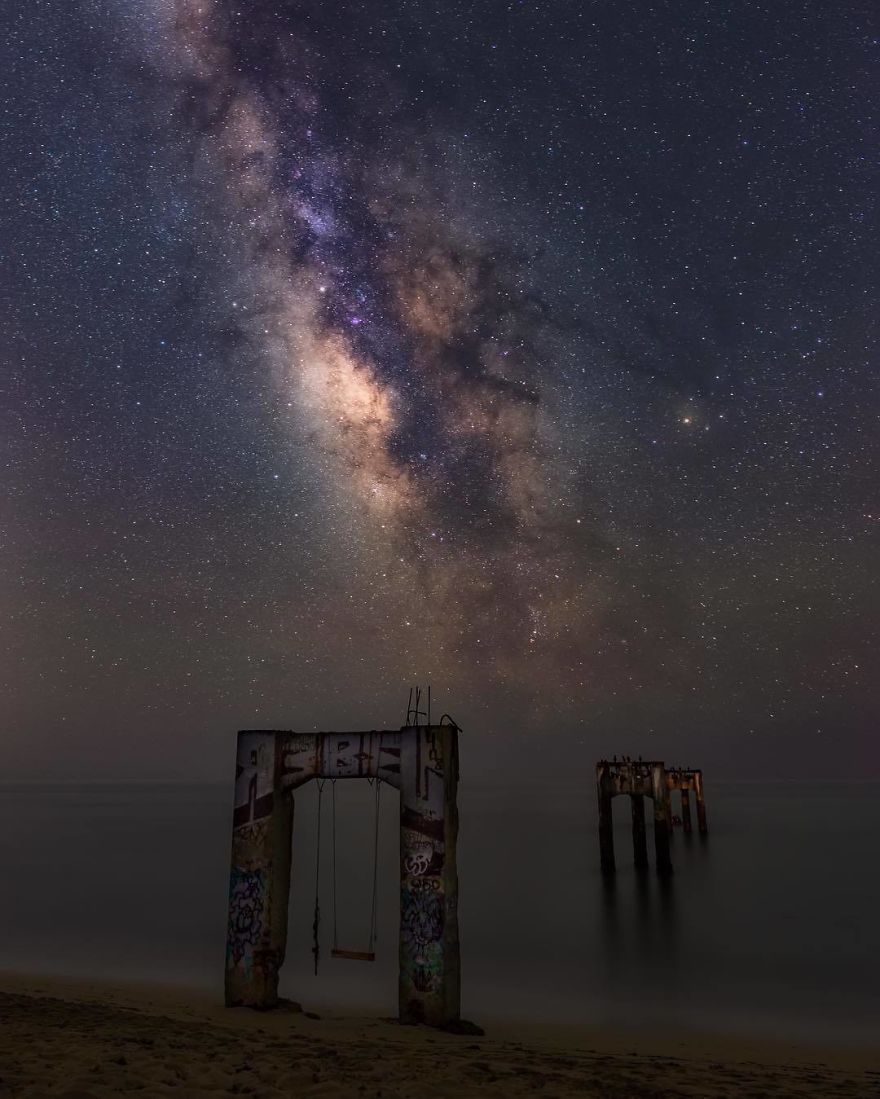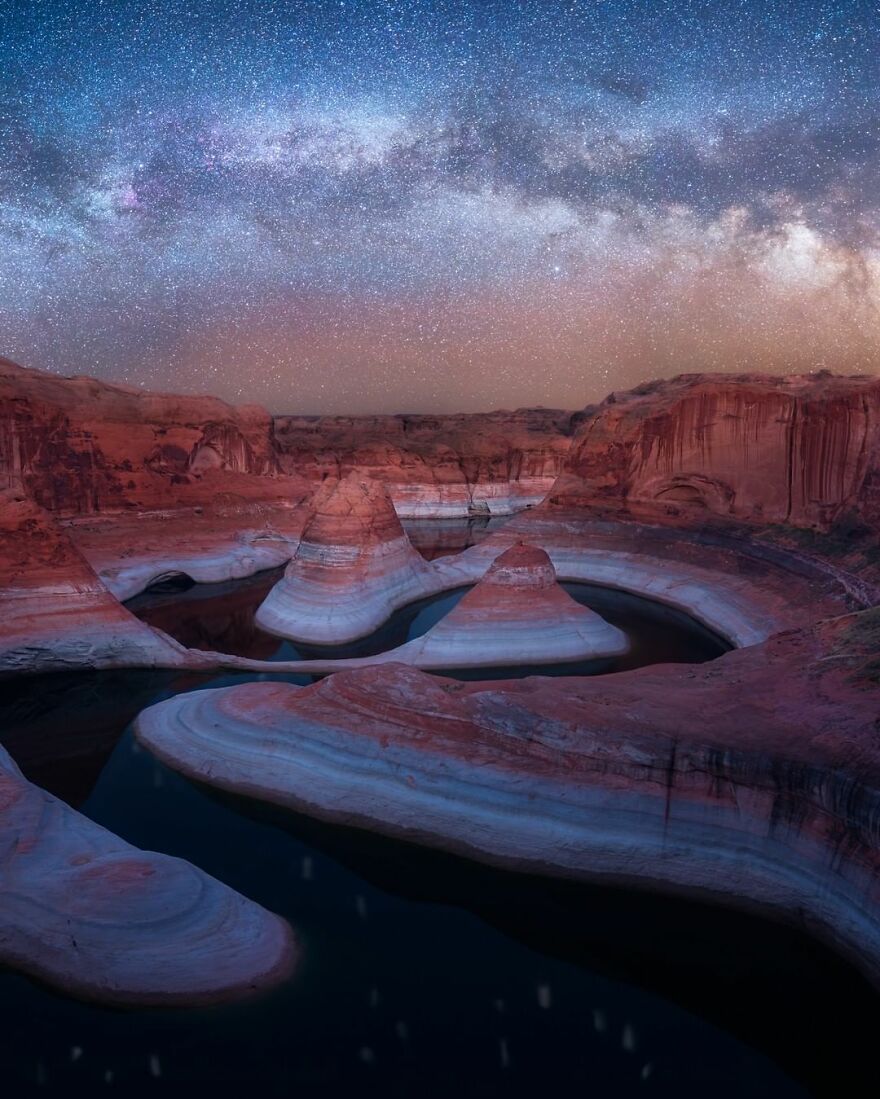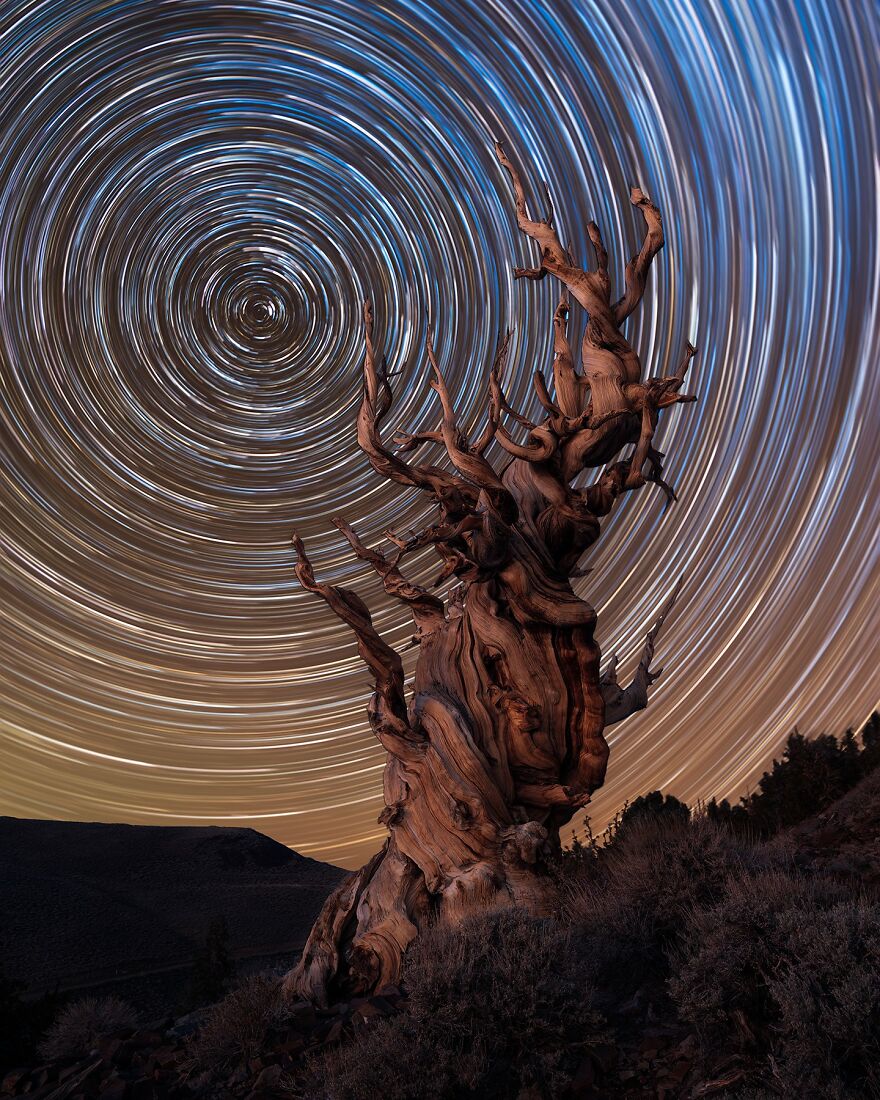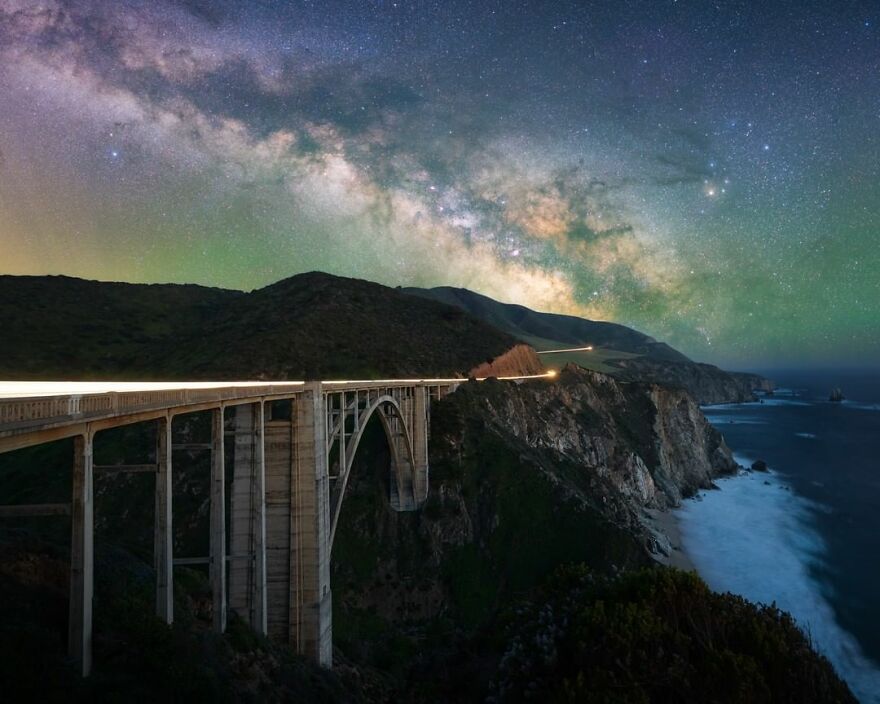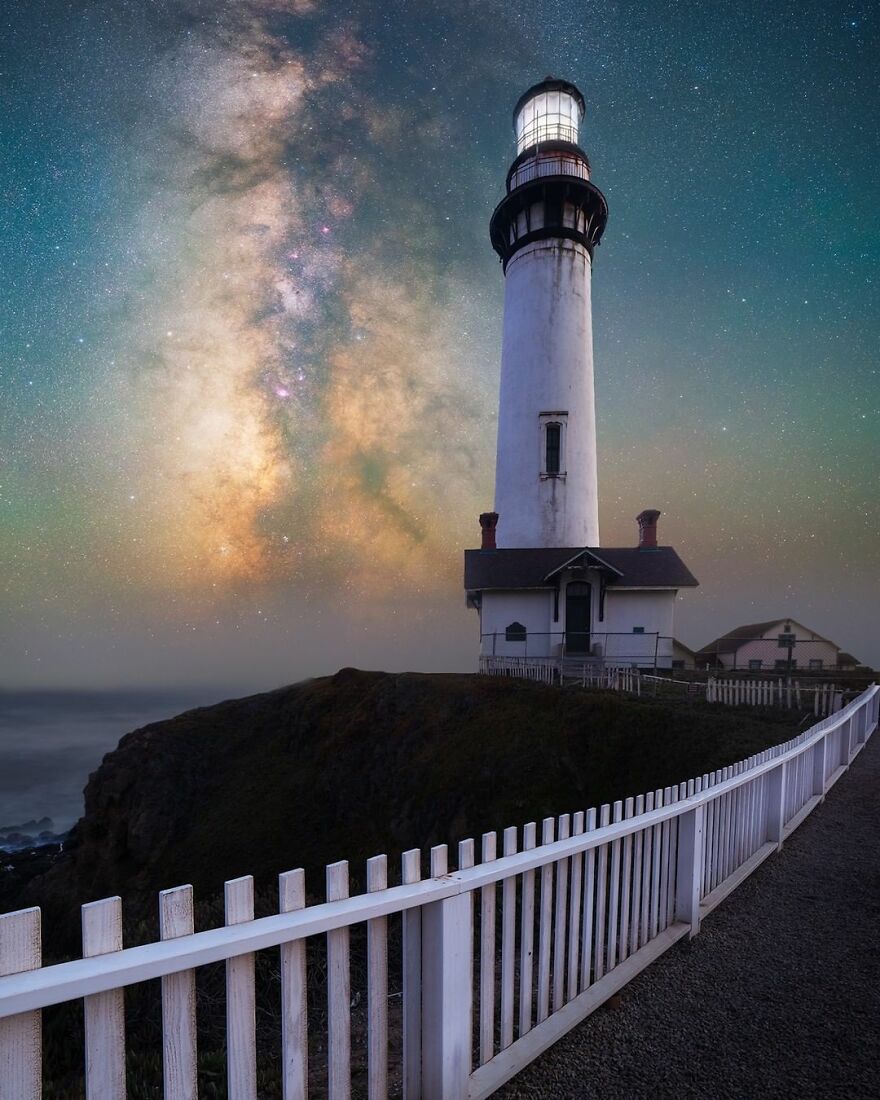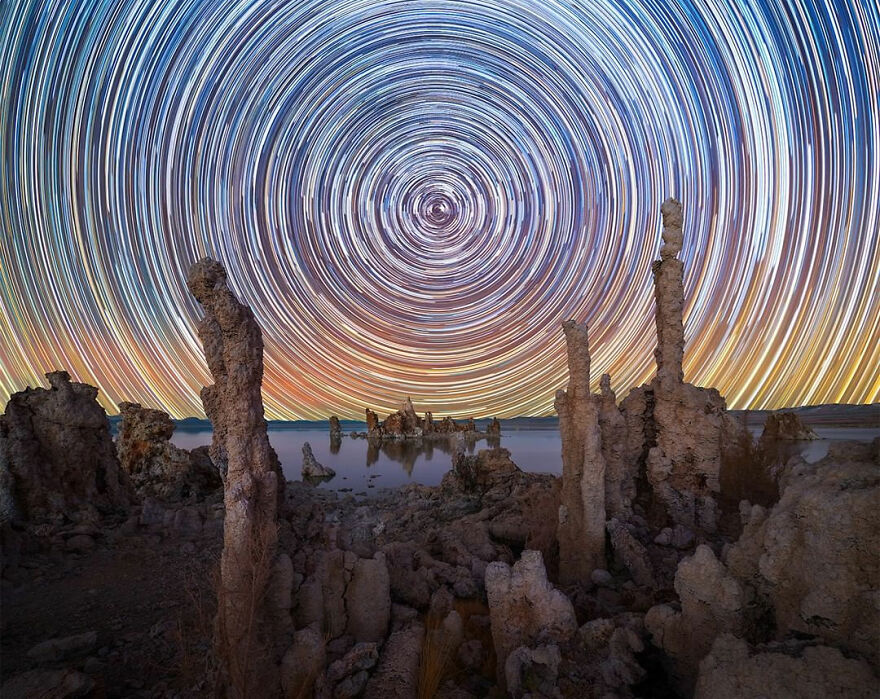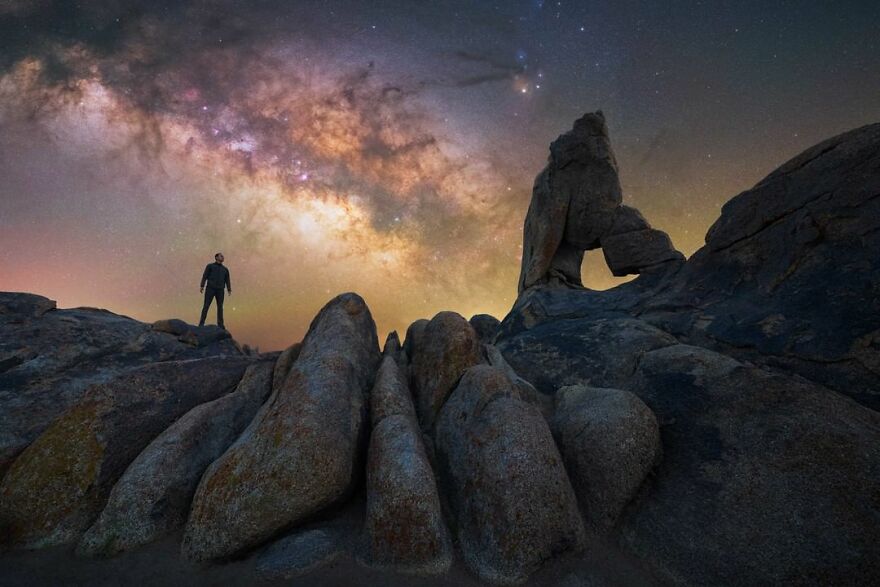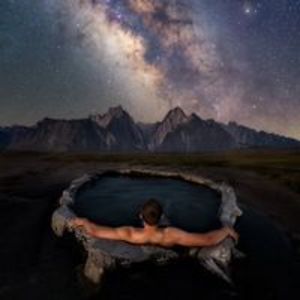My name is Marcin Zajac and I'm a landscape photographer from Poland, currently based in the San Francisco Bay Area in California.
One of my favourite type of images are nightscapes which include the night sky as a prominent part of a landscape. It's exhilarating to see the Milky Way arching overhead in a dark location and I find it to be a fascinating subject to capture especially because modern camera sensors can 'see' much more than our eyes.
Here's a selection of my favourite night images I've taken over the last 2 years.
More info: Instagram | Facebook | marcinzajac.square.site
This post may include affiliate links.
Galactic Portal
I took this photo last year on the coast of Australia when intercontinental travel was still a thing and had an opportunity to visit Sydney on a business trip. To capture it I took a train from Sydney to a coastal town of Kiama and once the sun has set I made my way into this small cave and waited for a few hours for the core of the Milky Way to come out. Not familiar with the Southern Sky I was surprised to also see Jupiter appear soon after (it's the brightest object to the left of the sea stack).
I picked up photography a few years ago when I started traveling more after moving to the US from Poland. Initially a casual hobby, it has gradually become a huge passion for me, I definitely did not expect it to become such a big part of my life.
I find it fascinating that my camera can capture more than my eyes can see – the color and the detail in the night sky in a dark location you can record with modern cameras are astonishing.
Pfeiffer Beach Archway
This is a vertical panorama of the Pfeiffer Beach archway in Big Sur on the Central California coast. The panorama consists of about 5 shots overlapping starting from looking straight at the sea stack all the way to almost completely overhead to capture a significant portion of the Milky Way.
Reaching For The Stars
This gnarly tree is an ancient bristlecone pine growing in the White Mountains of Eastern California at an elevation of ~11,000ft (~3500m). These trees are the oldest living non-clonal organisms in the world and some of them have been dated to be nearly 5,000 years old. That means they have been alive when the pyramids were being built in Egypt!
Conditions in these remote mountains are very harsh, with cold temperatures, a short growing season, high winds, and barren soil. Given that, bristlecone pines thrive in these conditions and attain their great age, despite their harsh environment that makes the pines grow very slowly which in turn makes the wood very dense and resistant to insects, disease, and erosion.
Photography has taken me to many stunning locations, from the coastline of Australia to the rugged volcanic landscape of Iceland. But I'm especially fond of the Southwest US (California, Utah, Arizona) and those areas are my favorite to shoot.
Paradise
If I had to choose my favourite place on Earth this might be it. Located on the Pacific coast near Big Sur it has everything — a beautiful cove filled with emerald waters, an 80-foot waterfall falling directly onto the beach, a palm tree making you feel like you're on a tropical island and a perfectly dark sky which shines bright with stars at night.
Magic Mushroom
A mushroom-shaped hoodoo stands tall in the New Mexico badlands while the Milky Way peeks through the clouds. Typically, I aim to have clear skies when shooting the night sky, but I think the thin clouds in this image are adding a lot of interest to the scene. They look as if they were captured during sunset, but they are actually lit by light pollution from nearby towns. It was taken this May during a road trip to the Ah-Shi-Sle-Pah Wilderness in northwestern New Mexico.
First find a dark location such that the sky will not be light polluted. Second I look for an interesting composition where there is a balance between the landscape and the sky. The landscape could be anything like mountains, an interesting tree, really anything that tells a story.
Alien Throne
An otherworldly rock spire (also known as a hoodoo) rises out of the badlands forming a perfect foreground to the Milky Way galaxy above. Part of the Ah-Shi-Sle-Pah Wilderness in the San Juan Basin in northwestern New Mexico this is one of most remote areas of the United States I've had a chance to visit. The nearest town is 50 miles away and the rough and occasionally sandy road to get there stress-tested my 2WD car. However, I was rewarded with an opportunity to camp under a dark and beautiful sky and the only sound breaking the silence at night were coyotes howling in the distance.
Boot Arch
If like me you don't understand where the name of the arch (Boot Arch) came from then please take a look inside the arch! This arch is one of many located in Alabama Hills—rock formations on the eastern slope of the Sierra Nevada.
This spring I am heading out on a roadtrip to Utah and Arizona and plan on capturing the Milky Way above the fascinating formations there. And in the summer I am going to be in the Canadian Rockies, my first time in Canada.
Guiding Light
At 115ft (47m) Pigeon Point is the tallest lighthouse on the west coast of the United States. Located between Santa Cruz and San Francisco it has been guiding ships approaching the California coast since 1872.
A Million Stars
Milky Way rising over the moonlit Big Sur coastline
Big Sur has been called 'The Greatest Meeting of Land & Water in the world'. Located two hours south of the San Francisco Bay Area this mountainous stretch of the California coast is easily accessible and yet undeveloped and sparsely populated. There is virtually no light pollution here which makes this a perfect destination for night photography. The only source of light apart from the stars was a setting crescent moon and the occasional lights of a car driving on the Pacific Coast Highway.
In Motion
The night sky spinning around the North Star while cars drive through the Bixby Bridge on the Pacific Coast Highway in Central California. This is my first attempt at capturing star trails caused by the Earth's rotation. This image is constructed from almost 3.5 hours worth of exposures (5 mins each) while I tried not to freeze during a crystal clear, but cold night in Big Sur.
Bowling Ball Beach
These strange spherical boulders on the Mendocino coast in Northern California are revealed only during low tide. Resembling bowling balls they are called concretions and were formed as the softer surrounding sandstone was eroded by the Pacific Ocean over millions of years. There are at least four conditions that need to be met to make this photo possible.
First is the right time of year as the galactic core of the Milky Way is only visible during the summer season (April to September).
Second is the phase of the moon, because around the new moon is best so that the light from the moon doesn't wash out the Milky Way.
Third, the tide needs to be low, otherwise the boulders are completely submerged.
Finally, the weather during the summer in this area is often engulfed in fog resulting in poor visibility. On Sunday night all these factors were favourable so I decided to make the 8-hour long round trip from the Bay Area.
Admiring The Milky Way
Admiring the Milky Way from a hot tub in the Eastern Sierras.
Top Of The World
My favourite kind of nightlife consists of the Milky Way arching over Half Dome and Yosemite Valley as seen from Glacier Point.
Ancient Bristlecone Pine Forest
My first attempt at astrophotography. This is a moonlit ancient bristlecone pine in the White Mountains of eastern California. These trees can live over 5000 years and are the longest living organisms on Earth.
Comet Neowise
Here's Comet Neowise (C/2020 F3) with its two tails. The blue-glowing thin ion tail pointing upwards and the larger dust tail filling most of the frame. I captured it in Alabama Hills, a dark location in Eastern California where the comet was clearly visible with a naked eye. This image is a result of stacking 10 exposures all shot at 60s, ISO3200 and f/2.8 with a 70mm lens. I used a star tracker to allow me to expose for a whole minute without visible trailing in the stars and the comet caused by rotation of the Earth.
Martin's Beach
There's an ongoing legal battle over access to this beach that might end up in the US Supreme Court. Currently, the road leading to the beach is gated by the owner, but walking through to the beach is not prosecuted and a lot of people hang out here during the day.
This is one of my favourite places to shoot in the Bay Area. I've never had any luck with sunsets here as the weather on the San Mateo coast can be quite unpredictable and conditions that look favourable can change very quickly. However, on this night I witnessed a rare treat — a completely clear summer coastal night.
The Milky Way here is not as prominent as in more remote locations on the coast due to light pollution from nearby towns, but I am still amazed by the amount of detail visible so close to Silicon Valley.
Alien Eggs
These swirling, eroded sandstone boulders located in the arid desert of northwestern New Mexico evoke a feeling of standing on a planet from another world and being surrounded by alien creatures emerging from the shells of their cracked eggs. This area was once covered by an ancient sea and as the water receded it left behind a thick layer of jumbled sandstone, mudstone and shale that lay undisturbed for over 50 million years. However, when 6,000 years ago the last ice age receded, it carved the landscape into its current eerie shape.
Shark Fin Cove Beach
Another shot from a different perspective of Shark Fin Cove where the milky way was rising over a clear night sky.
Davenport Beach
This picture was taken on a Davenport Beach, Davenport, California. Another shot of a clear night sky above the abandoned beach.
Through the forest and over the mountains and into the sky alas I says it beautiful
Secret
These petroglyphs were carved into a large volcanic boulder by Native Americans who inhabited this part of Eastern California thousands of years ago. By chipping away at the dark surface of the rock, they exposed the lighter rock underneath. What's unusual about this panel is that it faces upward towards the sky, enabling some interesting compositions that include the Sierra Nevada mountains and the night sky in the same frame. The location of this petroglyph is a carefully guarded secret to avoid vandalism of this unique and sacred place and finding it was an adventure on its own. For that reason don't ask me how to find it.
Shark Fin Cove
Milky Way rising over Shark Fin Rock on a beach near Santa Cruz.
This image was blended with 1 shot for the sky (F2.8, 20", ISO 3200) and 1 shot for the foreground (F2.8, 3 mins, ISO800).
The Remnants
Built in the 1860s the Davenport Pier was a platform used for transporting timber north towards San Francisco. Long abandoned since then the wharf eroded and today only the concrete arches that once held the pier have survived the test of time.
Scary... does anyone also think that the planks and stuff look like a swing? A horror film swing?
Yes, I am waiting for the demon children to appear
Load More Replies...This is the most remote location I've had a chance to visit, photograph and spend the night at. It might also be one of the most beautiful. Getting here was a challenge - the last 50 miles of the drive to the trailhead is a badly washboarded dirt road that took over of 2 hours of careful driving to complete. Don't tell Hertz. (Name of rental agency may have been changed to protect the not so innocent). After that catch some sleep in my car at the trailhead and start the 20 mile round trip hike in the morning. The fun part? There's no access to water on the way, so I had to carry 8 liters of water for the 2 day trip in addition to food, a tent, sleeping bag and all my photo gear. Overall 20kg on my back. But once you get to the lake you know it was worth it, especially when late at night the Milky Way arch rises above the lake that fills the s-shaped canyon.
This gnarly tree is an ancient bristlecone pine growing in the White Mountains of Eastern California at elevation of over 10,000ft (3200m). These trees are the oldest living non-clonal organisms in the world and some of them have been dated to be nearly 5,000 years old. That means they have been alive when the pyramids were being built in Egypt! Conditions in these remote mountains are very harsh, with cold temperatures, a short growing season, high winds, and barren soil. And yet bristlecone pines thrive in these conditions and attain their great age, not in spite of their harsh environment, but because of it - the pines grow very slowly which makes their wood very dense and resistant to insects, disease, and erosion.
I had never heard of these trees but they are both beautiful and haunting. Would love to be able to purchase some of your landscapes just to get lost in them.
Drive
Milky Way over the historic Bixby Bridge in Big Sur. This stretch of the California coast features steep cliffs, hidden beach coves, and one of the most spectacular drives one can take anywhere in the world. Thanks to being almost completely undeveloped there is no light pollution here which makes this a perfect destination for stargazing.
At 115ft (35m) Pigeon Point is the tallest lighthouse on the West Coast of the United States. Located between Santa Cruz and San Francisco it has been guiding ships navigating this stretch of the Pacific coast since 1872. Before then many vessels have been wrecked in this area because of the dense fog making it impossible for the mariners to see the land. The frequent fog also makes it hard to see the stars here as virtually all summers nights are fogged in. But as autumn started, and the fog relented for a few days, I had a chance to see the vertical Milky Way in tandem with the lighthouse.
Dizzying sky over Mono Lake located on the eastern slope of the Sierra Nevada. If you're not sure what's happening in this photo - this is a result of letting my camera take photos continuously for 3 hours, capturing the apparent movement of the stars due to Earth's rotation. When facing north the stars appear to be circling around the North Star.
Mono Lake is one of the oldest and saltiest lakes in North America (it's 3 times saltier than the ocean!). But its most unusual features are the dramatic tufa towers emerging from the surface. These rock towers form when underwater springs rich in calcium mix with the waters of the lake, which are rich in carbonates. The resulting reaction forms limestone. Over time the buildup of limestone formed towers, and when the water level of the lake dropped the towers became exposed.
Hard to beat warm summer nights in the desert! In this image the Milky Way is seen next to Boot Arch in Alabama Hills, a range of hills and rock formations near the eastern side of Sierra Nevada in California. If like me at first you don't see where the name Boot Arch comes from - look inside the arch.
Exquisite photography by someone with an eye for natural fine art! Each photograph takes one to a place we only wishfully dream of. Each represents serenity at it's finest! Thank you for taking us there and for the well guided tour!
I wrote a comment that he should sell pictures. Well folks he does on his website. In here is his address somewhere. Check it out.
I am literally stunned speechless looking at your photography. I would love to be able to gaze upward and see any one of those scenes. Thank you for sharing and giving me such insight as to the beauty,mystery and and overwhelming depth of our universe.
Exquisite photography by someone with an eye for natural fine art! Each photograph takes one to a place we only wishfully dream of. Each represents serenity at it's finest! Thank you for taking us there and for the well guided tour!
I wrote a comment that he should sell pictures. Well folks he does on his website. In here is his address somewhere. Check it out.
I am literally stunned speechless looking at your photography. I would love to be able to gaze upward and see any one of those scenes. Thank you for sharing and giving me such insight as to the beauty,mystery and and overwhelming depth of our universe.

 Dark Mode
Dark Mode 

 No fees, cancel anytime
No fees, cancel anytime 






